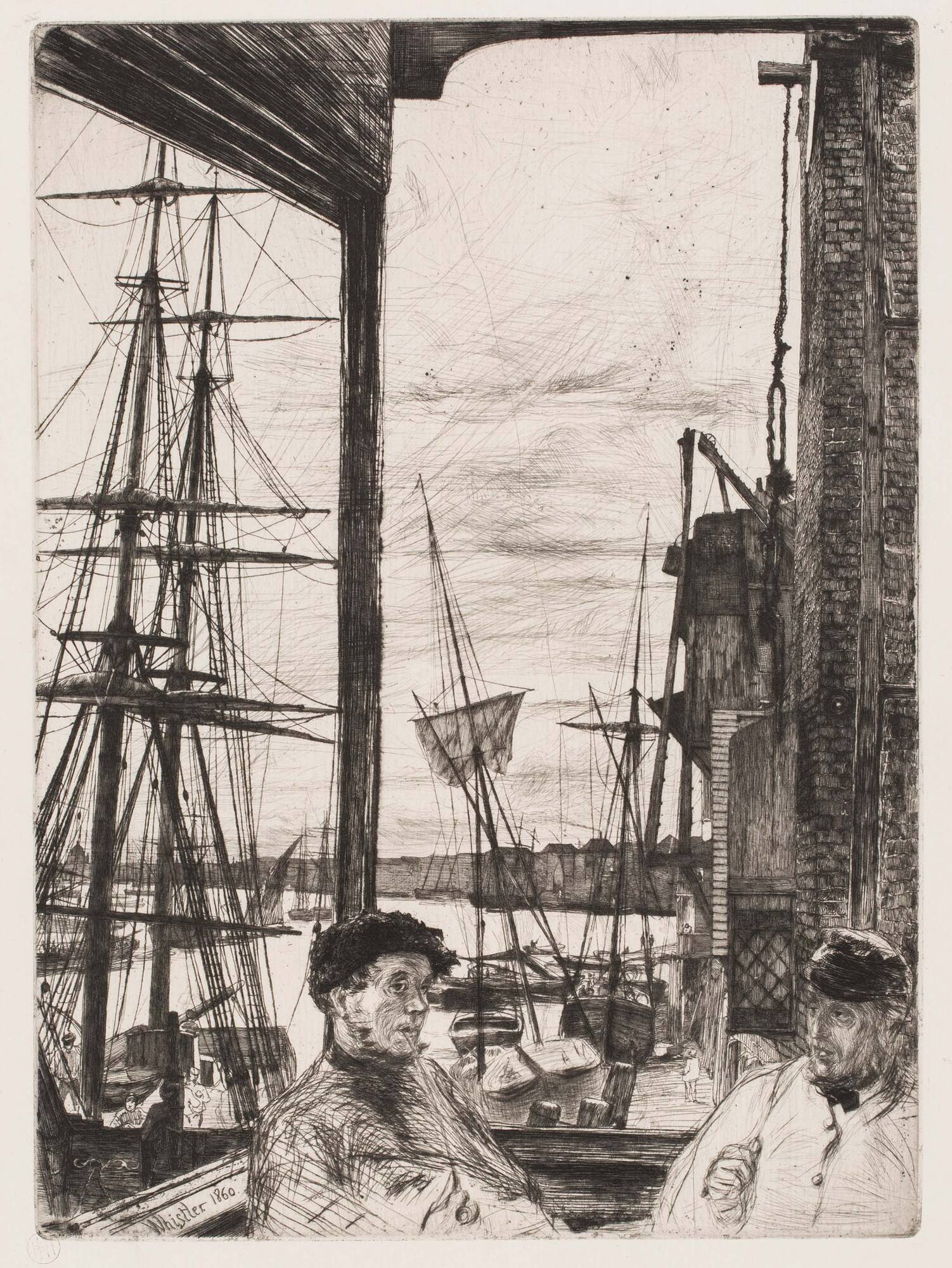
Object Details
Artist
James Abbott McNeill Whistler
Date
1860
Medium
Etching and drypoint on laid paper
Dimensions
Image: 10 7/8 x 7 7/8 inches (27.6 x 20 cm)
Sheet: 16 x 11 1/2 inches (40.6 x 29.2 cm)
Credit Line
Bequest of William P. Chapman, Jr., Class of 1895
Object
Number
57.223
As a child Whistler had been given a book of Hogarth’s engravings and etchings depicting robust scen(…)
As a child Whistler had been given a book of Hogarth’s engravings and etchings depicting robust scenes of eighteenth-century London life, and these images left a lasting impression on him. Throughout his career he was equally comfortable depicting an upper class Victorian drawing room and the drunks and dockhands he found in the Thames dockyards. In 1859, discouraged by his treatment by the Salon committee in Paris, Whistler arrived in London and almost immediately began to pursue his experiments in etching with the aid of his brother-in-law, the surgeon and artist Seymour Haden. In preparation for a series of Thames images, Whistler moved in 1860 to the slum section of Wapping where he lived from June to November with his mistress and model Jo Hiffernan and created what has become known as The Thames Set. The most successful of these prints, Rotherhithe, was made on the balcony of the Angel Inn at Rotherhithe, with a view northwest to the City, and St. Paul’s just visible at the far left. Whistler, for all his perfectionism, did not bother to reverse the orientation of the scene when etching the plate, as he was more interested in the spatial elements, using a Japanese perspective. By placing the post asymmetrically and the figures low and directly against the picture frame, Whistler had taken the first steps in grafting an eastern sensibility onto a western composition, something that would remain for him a lifelong obsession.
(From “A Handbook of the Collection: Herbert F. Johnson Museum of Art,” 1998)












